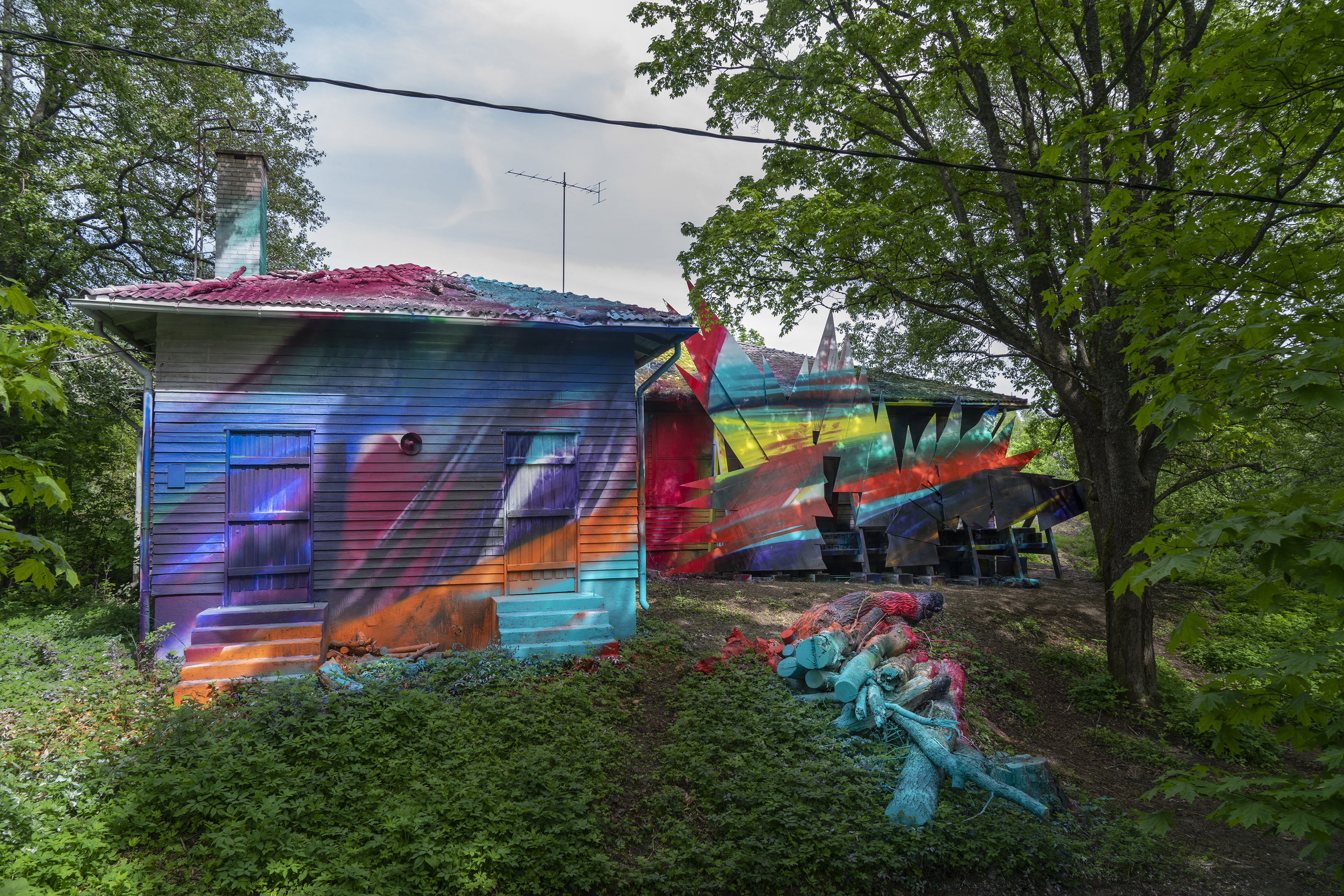Using natural landscapes and buildings as her canvas, Katharina Grosse is a painter of colourful, radical visions.
Katharina Grosse (b. 1961, Germany) lives and works between Berlin, Germany and New Zealand. Grosse is fascinated by how colour can affect its surroundings. In her large-scale in-situ paintings, she abandons the confines of the traditional rectangular canvas and uses floors, walls, other structures and natural materials as her support. For her, a painting “can land anywhere: on an egg, in the crook of the arm, along a train platform, in snow and ice, or on the beach”. Her tools are equally diverse: She paints with an industrial spray gun, but also applies paint with her own hands, rollers and brushes. The result of the painting process is more like a sculpture that emerges from a geographical location rather than a conventional painting.
For Grosse, contemplating the world means simultaneously doing something with it. Painting is an act that emerges from a relationship with a particular place and embraces the incidents that occur while she paints. Katharina Grosse’s multi-layered, haptic pictures are radical and provocative, making us realize that it is always possible to view reality differently.
Her recent institutional exhibitions and in situ paintings include The Horse Trotted Another Couple of Metres, Then It Stopped at Carriageworks, Sydney (2018); Wunderbild at National Gallery in Prague (2018/2019); Mumbling Mud at chi K11 art museum in Shanghai (2018/2019) as well as at chi K11 art space in Guangzhou (2019), a two-person show Mural: Jackson Pollock / Katharina Grosse at Museum of Fine Arts, Boston (2019/2020), and It Wasn’t Us at Hamburger Bahnhof – Museum für Gegenwart – Berlin (2020–21).

Katharina Grosse: Shutter Splinter, 2021 ©Maija Toivanen/HAM/Helsinki Biennial 2021
Shutter Splinter, 2021
Katharina Grosse’s contribution to the biennial is a painting sweeping across the island’s old schoolhouse and the surrounding unkempt vegetation. The children who once lived on the military island attended the school from the 1950s to the 1980s. The building is contaminated and unfit for human habitation due to toxic actinomyces in the interior. Grosse has transformed the old schoolhouse into an outdoor studio in the tradition of plein air painting or Edvard Munch’s sending off his canvases into the weather.
In her painting, built structure and nature blend, as the colour touches the schoolhouse, a construction of shaped plywood planes, and the surrounding vegetation. While the schoolhouse will be demolished after the exhibition, the remaining traces of the painting will slowly vanish when the vegetation begins its new seasonal cycle. Grosse’s brief but visually striking intervention in the landscape is a reminder of the passage of time, engaging in a dialogue at the intersection of cultural memory and natural processes.
Photo 1: Markus Jans
Katharina Grosse
Shutter Splinter
2021
Acrylic on plywood, ground and wall
Production team Katharina Grosse:
Hans Grosse, Arne Schreiber: Heads of production
ArtEngineering GmbH (Herwig Bretis, Alexander Spänig): Structural engineering
Commissioned by HAM/Helsinki Biennial 2021
Courtesy of KÖNIG GALERIE